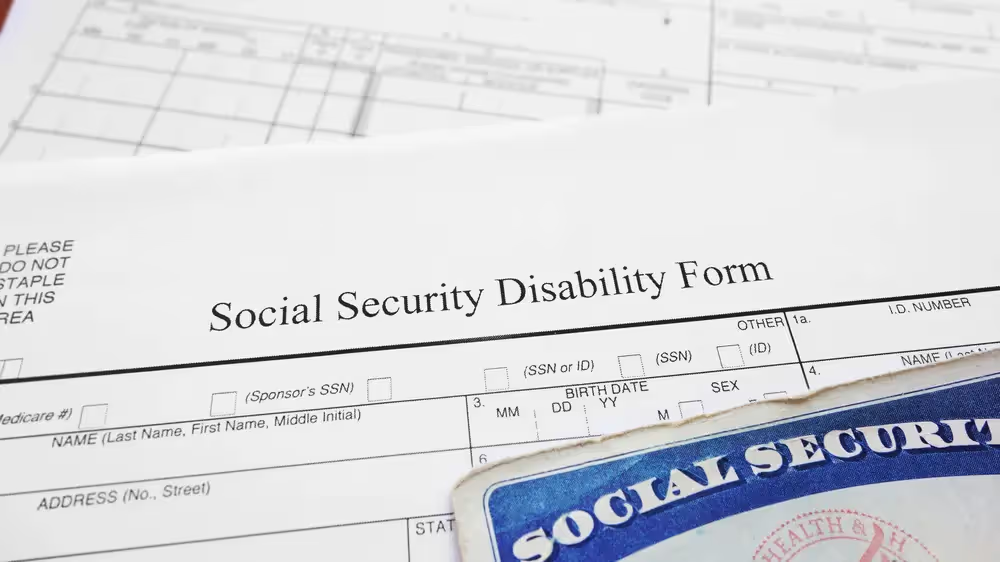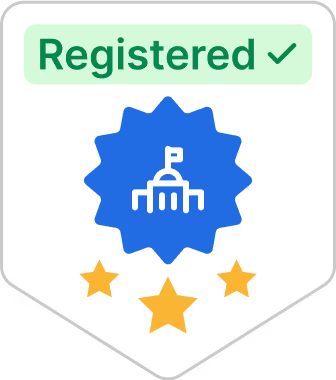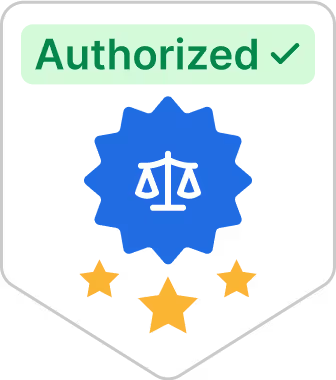A complete guide to SSDI

What is SSDI? SSDI, meaning Social Security Disability Insurance, is a government program funded through taxes that are used to help those with disabilities who aren’t able to work. Through SSDI, disabled individuals and their families can collect monthly monetary benefits.
Like many government programs, SSDI can be a bit tricky to understand. From learning what conditions qualify for disability to understanding the appeal process there is a lot of information to unpack about SSDI. Additionally, there are many eligibility requirements you have to follow in order to become an SSDI beneficiary. This guide will help you learn the basics of SSDI benefits, and take you through the application process.
The basics of SSDI: What is disability insurance?
The reason they call SSDI “disability insurance” is because the funds used for disability payments come from payroll taxes paid to the Social Security system. Much like Social Security retirement benefits, workers pay taxes on their wages to be insured later in life. Hence: insurance.
Some government benefits like Unemployment Insurance and Supplemental Security Income (SSI) pay based only on financial need. SSDI, however, has more criteria you have to meet in order to qualify for benefits.
Who is Eligible for SSDI benefits?
Because SSDI is funded through payroll taxes, only qualified workers are eligible to receive benefits. A qualified worker is anyone who paid Social Security taxes for a certain number of years. That means workers who are paid “off the books,” or in cash without paying taxes, will cannot become SSDI recipients. A different number of years worked are needed for individuals of different ages:
- If you become disabled before age 24 –In most cases, people who become disabled before the age of 24 will need to prove 1.5 years of work within the three years prior to their disability.
- If you become disabled after age 24 but before age 31 – People who become disabled within this age range will need to prove they worked half the years between age 21 and the age of their disability. For example, let’s consider someone who becomes disabled at age 29. The number of years between age 21 and the age they became disabled would be 8 years (29 minus 21). So, they would have to prove half of 8 years, for a total of 4.
- If you become disabled at age 31 or later – People who become disabled at age 31 or later will have to prove 5 years of work within the 10 years prior to their disability.
If you prove that you worked the necessary number of years, you will then need to provide medical information to qualify for SSDI benefits.
Proving your disability
SSDI benefits are only granted to people who have a “disabling condition.” Here are some criteria your medical condition must meet to be considered disabling:
- Your condition keeps you from performing the work you did prior to becoming disabled
- Your condition prevents you from doing other work
- Your condition is predicted to last at least 12 months, or to end in your death
- If you are able to work some amount, your condition prevents you from earning more than $1,070 per month
Disabled individuals can earn a limited income of $1,070 per month. Although this amount changes every year, the Social Security Administration (SSA) releases an annual update to their benefit terms where you can locate this amount. SSDI benefits are not typically available for people with only partial or short-term disabilities.
Contacting your doctors
You will be asked to provide names, addresses, and phone numbers of any and all doctors, caseworkers, hospitals, and clinics involved in your diagnosis. When your SSDI application is being reviewed, Social Security agents will contact these medical professionals to ask for information about your ability to do work-related activities, including:
- Walking
- Sitting
- Lifting
- Carrying
- Remembering instructions
You will also have to provide other forms of medical evidence such as your health records, including lab tests and results, and any medications you take.
Compassionate allowances
In the past, every disability claim was treated equally. That is, a claim from someone with a very severe condition used to be processed the same as a claim from someone with a more mild condition. However, in 2008, the SSA began the Compassionate Allowances initiative. This program was enacted to help the most severely disabled individuals avoid long wait times associated with SSDI application reviews.
When the program began in 2008, only 50 conditions qualified for a compassionate allowance. Since 2012, there are over 200 qualifying conditions. Here are a few of examples:
- Early-onset Alzheimer’s disease
- Many kinds of inoperable or metastatic cancer
- Fatal Familial Insomnia
- Heart transplant waitlist (1A and 1B)
- Juvenile onset Huntington’s disease
The benefits of SSDI: What do you get?
So, how long does it take to get disability benefits? After you submit your application for disability insurance, you will most likely have to wait 3 to 5 months for a response, although in some cases it can take longer.
(Keep in mind: if you have a condition that qualifies for a compassionate allowance, your wait time should be greatly reduced.)
Once the SSA has reviewed your application, they will send you a letter informing you of the conditions you have been approved for. This letter will tell you how often you will need to undergo medical reviews to maintain your SSDI. It should also tell you your “Established Onset Date,” meaning the date you became disabled. This date may not be what you were expecting. The SSA could determine the date of your disability later than when you believe it took place.
You will receive another letter informing you of your award amount—this monthly payment is your SSDI benefit. It may also include a back-pay amount. You can receive your monthly payments to your bank account via direct deposit. Otherwise, you will receive your Social Security disability benefit in the form of a payment card, which works just like a debit card. Disability payments begin during the sixth full month of your disability.
How much money is the monthly payment?
There is no set amount for SSDI payments. They vary on a case-by-case basis. Here are some of the factors that can affect your benefit amount:
- The number of years you worked before becoming disabled
- Your previous earnings
- The severity of your condition(s)
- Your current ability to work
Unfortunately, another important factor that may influence your benefit amount is gender. According to the Center on Budget and Policy Priorities, women are generally awarded lower benefits than men. In December 2017, the average female worker was awarded $1,069, while the average male worker was awarded $1,320. That equals a difference of nearly 20 percent.
Auxiliary benefits
In many cases, some members of your family can also receive SSDI benefits based on your claim. These are the family members that may be eligible:
- Your spouse – Your spouse may be able to receive SSDI benefits if they are age 62 or older. However, they may be able to receive benefits at any age if they are caring for your child. In this type of situation, your child must be under the age of 16, or disabled themselves.
- Your child – Your child may be able to receive SSDI benefits if they meet certain criteria. They must be younger than 18 (or 19 if they are still in high school) and cannot be married. These benefits can apply to biological children, adopted children, and in some cases stepchildren and grandchildren. Your child may be able to receive benefits over the age of 18 if they have a disability that began before age 22.
Medicare
Medicare is a government-funded health insurance program. Many people think that this program is only available for senior citizens. While Medicare is often used by people who are age 65 or older, they are not the only group allowed to use Medicare.
If you qualify for SSDI, you can receive health insurance from Medicare after two years of receiving disability benefits. Medicare can help you pay for hospital stays, doctor visits, medical supplies, prescription drugs, and more.
How to apply for SSDI
If you think that you may qualify for disability benefits, you can apply for SSDI a couple of ways. There is an online application, although people without internet access can also apply over the phone by calling 1-800-772-1213, the SSA’s toll-free number, or visiting one of your local Social Security office locations.
Social Security: Why it matters
Social Security is one of the most important government programs in the U.S. It helps support vulnerable members of society who deserve to live without extreme financial burdens.
SSDI is just one aspect of this large social program that we fund through our taxes.
Getting a Social Security Number
Because SSDI is part of the Social Security system, the most important thing you will need when you apply for SSDI is your Social Security number. Every citizen is given a unique, nine-digit Social Security number, and without it, you will not be able to receive SSDI benefits.
Your Social Security number is printed on your Social Security card. In addition to SSDI, there are lots of programs and benefits that require a Social Security number to qualify. Luckily, you don’t need your physical Social Security card when applying for SSDI—just the number. But there are several instances when you may need the actual card, like applying for a driver’s license or a passport.
In the past, if you lost your Social Security card, the Social Security card replacement process was very long and difficult. Simplify the process and apply for a social security card online with GOV+.
Sources:
- Disability Benefits Help. What is the Compassionate Allowance program? https://www.disability-benefits-help.org/faq/compassionate-allowance-program
- Disability Secrets. What Is the Difference Between Social Security Disability (SSDI) and SSI? https://www.disabilitysecrets.com/what-is-the-difference-between-ssdi-and-ssi.html
- Medicare. What is Medicare? https://www.medicare.gov/what-medicare-covers/your-medicare-coverage-choices/whats-medicare
- Patient Advocate Foundation. I’m Approved for Disability . . . Now What? https://www.patientadvocate.org/explore-our-resources/preserving-income-federal-benefits/im-approved-for-disability-now-what/
- Social Security Administration. Disability. https://www.ssa.gov/disability/
Social Security Administration. Disability Benefits. https://www.ssa.gov/pubs/EN-05-10029.pdf























